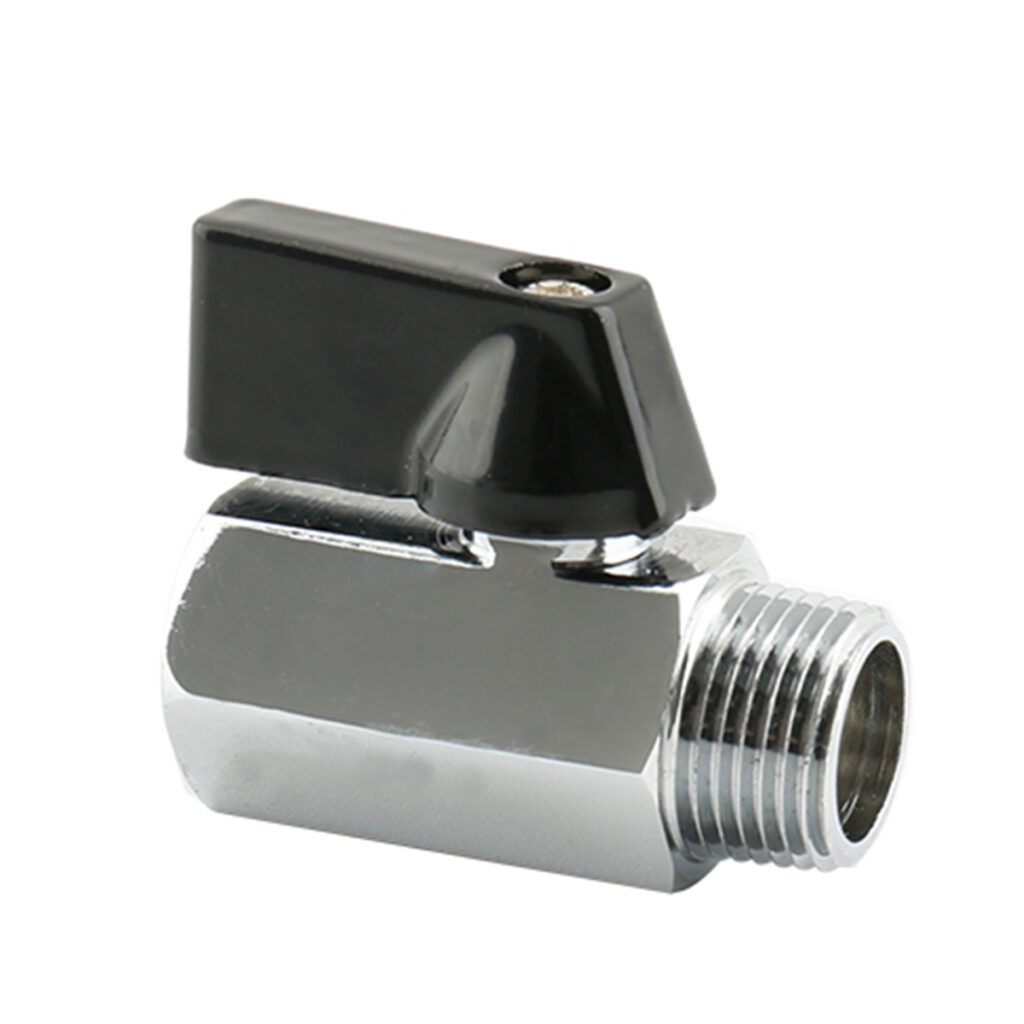Jedwali la yaliyomo
KugeuzaWhat is One-Piece Ball Valve?
Valve ya kipande kimoja cha mpira ni rahisi, valve compact iliyofanywa kutoka kipande kimoja cha chuma au plastiki. Ndani, there’s a ball with a hole through it that turns to control fluid flow. These valves are popular in residential applications, such as household plumbing systems and they’re cost-effective.

Technical Specifications
Size Range and Pressure Ratings:
Temperature Ratings:
- PVC: 32°F to 140°F
- Shaba: -4°F to 366°F
- Chuma cha pua: -20°F to 450°F
- Carbon Steel: 0°F to 400°F

Materials and Their Applications:
- Shaba
- Best for: Maji, air, mild chemicals
- Gharama: $$
- Durability: Good
- Corrosion resistance: Moderate
- Chuma cha pua
- Best for: Food, pharmaceuticals, corrosive fluids
- Gharama: $$$
- Durability: Excellent
- Corrosion resistance: Excellent
- PVC
- Best for: Maji, chemicals, low-pressure systems
- Gharama: $
- Durability: Fair
- Corrosion resistance: Excellent
Maombi & Industries
Water Systems:
- Residential plumbing
- Municipal water treatment
- Water filtration
Industrial Uses:
- Compressed air lines
- Basic chemical processing
- Cooling systems
- Basic process control
Comparison with Two-Piece Ball Valves
One-Piece vs. Two-Piece Ball Valves:
Structure Differences
One-piece ball valves have a single solid body that contains all components. Mwili hutupwa au kughushiwa kama kitengo kimoja, na mpira, shina, and seats assembled through the end. Two-piece ball valves, on the other hand, split into two parts.
Cost Comparison
One-piece valves are generally 30-40% bei nafuu kuliko matoleo ya vipande viwili. Tofauti hii ya bei inatokana na michakato rahisi ya utengenezaji na sehemu chache. Kofia ya chupa ina kazi ya kuweka yaliyomo kwenye bidhaa bila hewa, when considering long-term costs, two-piece valves might save money since they can be repaired rather than replaced.
Installation and Handling
One-piece valves are lighter and more compact, making them easier to install in tight spaces. Since there are fewer joints, they’re also less likely to leak. Two-piece valves are slightly bulkier.

Selection Guide
How to Choose the Right 1-Piece Ball Valve:
- Determine Your Requirements:
- Pipe size
- Operating pressure
- Temperature range
- Fluid type
- Flow requirements
- Space constraints
- Consider These Factors:
- Material compatibility
- Pressure rating
- Temperature limits
- Cost constraints
- Installation method
- Local regulations
Installation & Matengenezo
Installation Steps:
- Clean pipe ends
- Apply thread sealant (if threaded)
- Align valve with flow direction arrow
- Tighten connections properly
- Test for leaks
Best Practices:
- Don’t over-tighten
- Use appropriate tools
- Follow torque specifications
- Maintain clearance for the handle
- Support pipe properly
Factors Affecting Cost:
- Material quality
- Brand reputation
- Certification requirements
- Order quantity
- Market conditions
Market Trends
Current Developments:
- Smart valve integration
- Eco-friendly materials
- Enhanced durability
- Better sealing technology
- Automated monitoring
Future Outlook:
- Growing demand in residential sector
- Increased focus on water conservation
- Rise in smart home applications
- Stricter quality standards
- New material technologies
Maswali Yanayoulizwa Mara kwa Mara
Q: How long do one-piece ball valves last?
A: Typically 5-10 years with normal use.
Q: Can they be repaired?
A: No, they’re designed to be replaced when worn.
Q: What’s the main advantage over other valve types?
A: Simplicity, kutegemewa, and cost-effectiveness.
Q: How often should they be operated?
A: At least once every 3-6 months to prevent sticking.
Q: Can they be used for steam?
A: Not recommended – use multi-piece valves instead.







